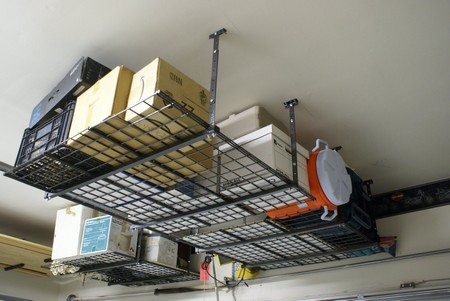According to sites like One Stop Self Storage, most of our houses become filled with too many possessions as we steadily acquire more gadgets, memorabilia, books and magazines, furniture, different kinds of tools, clothes etc. Before we start deciding what storage we require, we should decide what are the categories that are the most essential to us. For business storage spaces, we should also consider which kind of material handling equipment will be needed.
It makes sense to organise the possessions we decide to keep in appropriate storage facilities, in such a way that they can be easily found when required. Good self storage facilities can also help give your house a feeling of simplicity by taking away the clutter. There are many other advantages: it keeps things in order, accessible and in good condition so that they last longer. It can also create more space where we want it. When relieved of clutter we can enjoy the true spatial nature of a room.
If you’re looking for self storage units, you may want to visit this site.
Types of storage
What are some of the different approaches to storage we can adopt? These can be grouped into the following categories:
- Free-standing furniture
- Built-in or fitted cupboards
- Modular systems, fitted or free standing
- Rooms given over entirely to storage
- Storage partitions
Within these residential storage systems themselves, there are many ways of arranging the support and methods of containment:
- Shelving: adjustable or fixed
- Hanging from: hooks, runners and rails
- Containing in: drawers, boxes, lockers, tubes, jars, baskets, trays, box files, tins, and industrial containers.

It is free-standing furniture and modular units that make the most impact, in our rooms, whereas built-in units have the effect of streamlining the space in question. Our choice of the system for storage thus has an important effect on the way we can utilise the floor area and the impression that is given by any particular room.
Where to locate storage
Where to locate our storage systems or units is perhaps the most important decision of all. The following are the main considerations:
- Look at the entire house, decide which are the least usable spaces, and use these first for storage.
- Consider whether there are ways of using the circulation spaces: the corridors, hallways, landings and stair wells.
- See whether there is spare capacity in the roof space.
- Decide which things you want to have available near at hand (the items you need but never find).
- Also think of having storage associated directly with activities.
- Consider using storage on a seasonal basis (i.e. if there are some things that you would like to have available in winter but not in summer and vice versa).
- Or perhaps one smaller room could be given over entirely to storage.
The height of storage (whether we store things on the floor, on a wall or at high level) is also a relevant factor:
- floor level storage: beneath beds, in the eaves of the roof and under the stairs, eased access with wheels, runners, rails and drawers.
- wall storage: in partitions accessible from both sides, in alcoves and hanging systems of shelving or storage units, hidden from view by curtains or blinds.
- high level storage: the space at the top of the stairwell, round the upper circumference of high rooms, and systems hung from ceilings, use of ladders or pulleys can ease access.
Considerations to be born in mind when incorporating storage
- High level storage requires safe access.
- Light in a cupboard or walk-in store is important.
- An attic or roof space is of limited use unless converted.
- Marking containers clearly helps accessibility.
- Consider weight when you are fixing storage that requires taking extra heavy loads. Check the strength of the wall or floor.
- Store heavy items at waist height if possible to ease lifting.
- Light and bulky items can be stored at higher levels.
- If higher shelves are to be accessible from standing position, they need to be shallower than if designed to be accessible with a stool or ladder.
